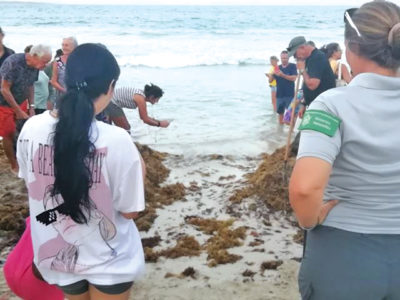The recent reopening of our beaches, these privileged places for observing the spawning of 3 protected species of marine turtles (leatherback, green and hawksbill turtles), can lead you to observe this type of wonderful event today still too rare and fragile. .
Classified as protected species, sea turtles are very sensitive to disturbance, especially when they are in egg-laying activity, which is a crucial step for the survival of the species.
It is however possible to observe them, while respecting certain precautions, recalled by the agents of the Reserve:
Instructions to adopt:
1) If I observe a turtle on the beach, what should I do?
A turtle on the beach is laying eggs. It is an important step for the survival of the species, but very sensitive to disturbance.
- Stay at a distance of more than 10 meters from the turtle so as not to disturb it and in order to take advantage of this rare observation
- Turn off or hide (if possible) nearby lights
- Do not photograph or light the turtle with a lamp in order to compromise egg laying
- Do not touch the turtle or its eggs
Recommendations: If I want to see sea turtles laying eggs, I ask about outings supervised by associations. In any case, I use a lamp that lights up red, so as not to disturb the sea turtles.
2) If I observe newborns, what should I do?
In the event of observation of newborns, it is essential not to intervene and to let them reach the sea naturally. At most, it is possible:
- Protect young turtles from predators (dogs, crabs, birds, etc.)
- Clear the space between the nest and the sea in the presence of obstacles (branches, sargassum, ...)
- Make a "guard of honor" for the little ones to contain the public
- Turn off or hide (if possible) nearby lights at night, do not photograph or illuminate with a lamp
- Do not touch newborns
However, if you find disoriented newborns, who have taken a direction opposite to the sea, we invite you to collect them in a bucket type container and gently place them on the sand near the water (never directly in the water) so that they can reach the ocean.
All species of sea turtles and their habitats are protected by law. Handling and disturbing these animals is therefore strictly prohibited, except for officially authorized persons or in the event of a life-threatening emergency. The penalty for an offense is 15 euros and 000 year in prison.
8,748 total views














No comments